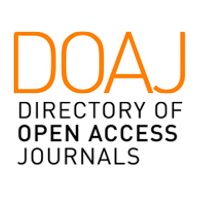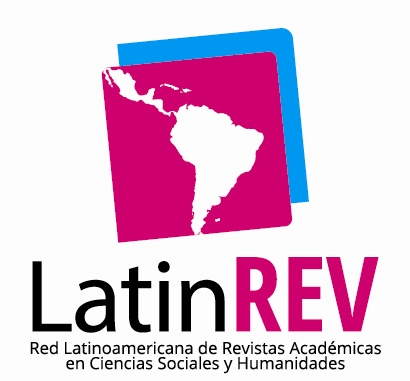Análisis del efecto de la robótica en la motivación de estudiantes de tercero de Educación Primaria durante la resolución de tareas de interpretación de planos
Resumo
El presente artículo analiza la influencia de la robótica en el grado de motivación del alumnado de tercer curso de Educación Primaria en la realización de tareas, relativas a la orientación espacial e interpretación de planos ligadas a aprendizajes curriculares de las áreas de matemáticas y ciencias sociales. La investigación transcurrió durante el curso académico 2016/2017 en un colegio público de la región de Castilla-La Mancha (España). Se compararon los resultados entre el grupo experimental (29 estudiantes), cuya experiencia aplicó una metodología basada en el uso de robots, y el grupo control (29 estudiantes), con el que se empleó una metodología tradicional. El instrumento de recogida de información utilizado fue el Instructional Material Motivational Survey de Keller (1983), que mide cuatro dimensiones: atención, confianza, relevancia y satisfacción. Los resultados manifiestan mejores niveles de la motivación en el alumnado que emplea robots, con valores superiores al grupo de control en todas las dimensiones evaluadas y en cada uno de los 36 ítems que componen el instrumento.
PALABRAS CLAVE. Robótica educativa; educación primaria; K-12; matemáticas; ciencias sociales.
Doi: 10.21703/rexe.Especial3_201816317314
Downloads
Referências
Barak, M., & Zadok, Y. (2009). Robotics projects and learning concepts in science, technology and problem solving. International Journal Technology & Desing Education, 19(3), 289–307. doi:10.1007/s10798-007-9043-3
Barker, B.S., & Ansorge, J. (2007). Robotics as means to increase achievement scores un an informal learning environmente. Journal of Research on Technology in Education, 39(3), 229-243.
Beniti, F.V. (2012). Exploring the educational potential of robotics in schools: A Systematic review. Computers and Education, 58(3), 978-988.
Beran, T., Ramirez-Serrano, A., Kuzyk, R., Fior, M. & Nugent, S. (2011). Understanding how children understand robots: perceived animism in child-robot interaction. International Journal of Human-Computer Studies, 69(7-8). 539-550.
Cabero, J., Fernández, B., & Marín, V. (2017). Dispositivos móviles y realidad aumentada en el aprendizaje del alumnado universitario. RIED. Revista Iberoamericana de Educación a Distancia, 20(2), 167-185. doi:http://dx.doi.org/10.5944/ried.20.2.17245
Chang, C. W., Lee, J. H., Wang, C. Y., & Chen, G. D. (2010). Improving the authentic learning experience by integrating robots into the mixed-reality environment. Computers & Education, 55(4), 1572-1578.
Chen, Y., & Yeh, H. (2009). From concepts of motivation to its application in instructional design: Reconsidering motivation from an instructional desing perspective. British Journal of Educational Technology, 40(4), 597–605. doi:10.1111/j.1467-8535.2008.00857.x
Díaz, J., Queiruga, C., Banchof, C., Fava, L. & Harari, V. (2015). Robótica Educativa y Videojuegos en el Aula de la Escuela. 10th Iberian Conference on Information Systems and Technologies (CISTI). 1298-1303.
Fagin, B. & Merkle, L. (2003). Measuring the efectiveness of robotics in teaching computer science. Proceedings of the 34rd SIGCSE technical symposium on computer science education. [en línea]. Recuperado de https://goo.gl/3TYzYH
Fletcher, G., & Lu, J. (2009). Human computing skills: rethinking the K-12 experience. Communications of the ACM e Association for Computing Machinery - CACM, 52(2), 23-25.
Freeman, A., Becker, S., Cummins, M., Davis, A., & Hall Giesinger, C. (2017). NMC/CoSN Horizon Report: 2017 K-12 Edition. Austin, Texas.
García, Y., & Reyes, D. (2012). Robótica Educativa y su potencial mediador en el desarrollo de las competencias asociadas a la alfabetización cientíica. Revista Educación y Tecnología, 2. 42-55.
Guzdial, M. (2008). Paving the way for computational thinking. Communications of the ACM e Association for Computing Machinery - CACM, 51(8), 25-27.
Haapasalo, L., & Samuels, P. (2011). Responding to the challenges of instrumental orchestration through physical and virtual robotics. Computers & Education, 57(2), 1484-1492.
Highield, K. (2010). Robotic toys as a catalyst for mathematical problem solving. Australian Primary Mathematics Classroom, 15(2), 22-27.
Karim, M. E., Lemaignan, S., & Mondada, F. (2015). A review: Can robots reshape K-12 STEM education? 2015 Ieee International Workshop On Advanced Robotics And Its Social Impacts (Arso). Lyon (Francia): IEEE, 345 E 47TH ST, NEW YORK, NY 10017 USA.
Keller, J. M. (1983). Motivational design of instruction. In C. M. Reigeluth (Ed.), Instructionaldesign theories and models: An overview of their current status (386-434). Hillsdale, NJ: Lawrence Erlbaum Associates.
Keller, J. M. (1987). Strategies for stimulating the motivation to learn. Performance and Instruction,26(8), 1-7.
Keller, J. M. (2010). Motivational design for learning and performance. New York: Springer Science+Business.
Levy, S. T., & Mioduser, D. (2008). Does it "Want" or "Was it programmed to..."? Kindergarten children explanations of an autonomous robot's adaptative functioning. International Journal Technology and Desing Education, 18(4), 337-359.
Lin, C. H., Liu, E., & Huang, Y. Y. (2012). Exploring parents' perceptions towards educational robots: Gender and socio-economics diferences. British Journal of Education Technology, 43(1),E31-E34.
Master, A., Cheyan, S., Moscatelli, A., & Meltzof, A. N. (2017). Programming experience promotes higher STEM motivation among irst-grade girls. Journal of Experimental Child Psychology, 160, 92-106. doi:10.1016/j.jecp.2017.03.013
Nourbakhsh, I. R., Crowley, K., Bhave, A., Hsium, T., Hammer, E., y Perez-Bergquist, A. (2005). he robotic autonomy mobile robotics course: Robot design, curriculum design and educational assesment. Autonomous Robots, 18(1), 103-127.
Papert, S. (1980). Mindstorms: Children, Computers, and Powerful Ideas. New York: Basic Books.
Peter, M., Gluck, J., & Beiglbock, W. (2010). Map understanding as a developmental marker in childhood. Journal of Individual Diferences, 31, 64–67.
Román-González, M. (2016). Codigoalfabetización y Pensamiento Computacional en Educación Primaria y Secundaria: Validación de un instrumetno y evaluación de programas. Madrid: EIDUNED.
Ruiz del Solar, J., & Avilés, R. (2004). Robotics courses for children as a motivation tool: he Chilean experience. IEEE Transactions on Education, 47(4), 474-480.
Sáez, J.M. & Cózar, R. (2017). Programación visual por bloques en Educación Primaria: Aprendiendo y creando contenidos en Ciencias Sociales. Revista Complutense de Educación, 28(2), 409-426.
Toh, L. P., Causo, A., Tzuo, P.-W., Chen, I.-M., & Yeo, S. H. (2016). A Review on the Use of Robots in Education and Young Children. Educational Technology & Society, 19(2), 148-163.
Downloads
Publicado
Edição
Seção
Licença
Política de acceso abierto
Esta revista proporciona un acceso abierto inmediato a su contenido, basado en el principio de que ofrecer al público un acceso libre a las investigaciones ayuda a un mayor intercambio global de conocimiento.
Licencia
Revista REXE "Revista de Estudios y Experiencias en Educación" de la Facultad de Educación, Universidad Católica de la Santísima Concepción, está distribuido bajo una Licencia Creative Commons Atribución 4.0 Internacional.






